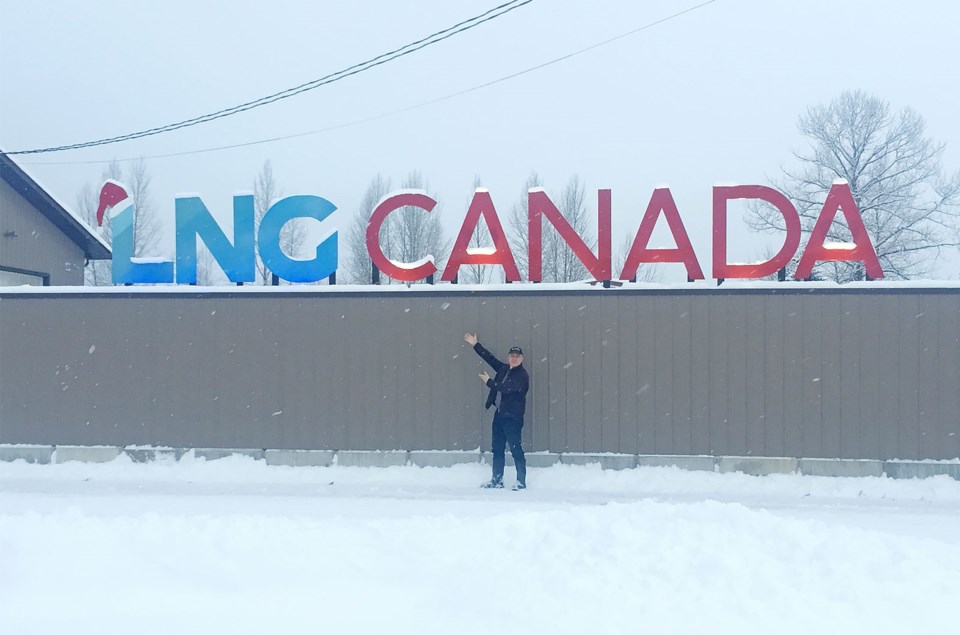Perhaps as early as this autumn, approximately 8,200 members of 14 First Nations in northern B.C. will receive the first payment in what will be a 40-year, $431 million government benefits package tied to the liquefied natural gas (LNG) pipeline that begins just north of Chetwynd and ends 676 kilometres later at the LNG Canada export terminal in Kitimat.
Each of the 300 tankers leaving Kitimat each year starting in 2025 will hold 170,000 cubic metres of LNG, worth about US$24 million at January 2020 prices (which were at a 10-year low).
About $22 billion of that revenue will begin flowing to B.C. government coffers when the first carriers begin sailing to Asian customers, but First Nations along the LNG pipeline route will benefit earlier.
Under benefit agreements worked out over the past six years to ensure the largest industrial project in B.C.’s history would proceed, the First Nations were offered what appear to be life-changing deals that include cash, employment and business opportunities.
Each of the Nations, some of which have fewer than 200 members, will share $10 million annually from the British Columbia government as long as the pipeline is pumping, an estimated 40 years.
In addition, the Indigenous bands will receive initial cash payments that total $31 million, or an average of approximately $2 million per community.
Half of these incentives are paid 90 days after the first 25 kilometres, known as the first spread, of pipe is in the ground. The pipeline contractor, Coastal GasLink, estimates that this official commencement of construction could be as soon as this summer. The final half of the incentives is paid 90 days after the pipeline begins fuelling the $13 billion LNG Canada terminal at Kitimat.
LNG Canada has signed separate impact benefits agreements with First Nations in Kitimat and along the shipping route, but the agreements “are considered commercially sensitive documents, not unlike a business contract, so we aren’t at liberty to discuss specifics,” said an emailed statement from Susannah Pierce, director of corporate affairs, LNG Canada.
Multimillion-dollar payments
One of the largest B.C. government payments goes to the Wet’suwet’en First Nation, the most populous Indigenous organization under the agreement, with 1,921 members. The Wet’suwet’en, located near Smithers, is in line for $4.8 million, plus a further payment of $988,000, according to government documents, as well as the annual payments of what could be $714,000 per community if an even division is used.
But tiny bands will also benefit. The 186-member Skin Tyee Nation will receive incentives of $2.3 million, plus an additional $466,000 and a share of the $10 million in annual payments.
Members of the Ts’il Kaz Koh First Nation (the Burns Lake Band) will receive initial payments totalling $954,500. When the annual payments are factored in, the community of 144 people would receive nearly $1.6 million the first year the LNG pipeline is producing.
For many in the north, there is less concern about how the money is split up – local municipalities also stand to benefit through local taxation – but are just glad the project is finally underway.
Contracts awarded
Since the LNG Canada consortium made its final investment decision in October 2018, $870 million in contracts have been awarded, much of it to local firms. As of January, 1,000 workers were employed on the $6 billion pipeline right-of-way, according to Coastal GasLink.
“Not only does construction create thousands of high-quality jobs, it creates demand for things like equipment, food services, accommodation and more. Our contractors are mandated to source local wherever they can, including equipment and supplies,” said Dan Bierd, Coastal GasLink’s vice-president of pipeline implementation.
One of those company owners is Fred Wilson of Northwest Truck Rentals in Smithers, who is supplying rental vehicles to Coastal GasLink and its contractors.
“The spinoffs [from LNG] are huge,” Wilson said. “It has a massive trickle-down effect.” Wilson himself plans to add commercial space to his 3.5-acre lot on Highway 16 to meet local demand.
In December, Wilson put his mechanic to work building a 60-foot-long lighted sign to show his support for the LNG project.
“My mechanic spent 39 hours making that sign. We wanted to bring some awareness to the project in our backyard,” he said.
LNG Canada is a consortium led by Royal Dutch Shell that includes Korea-based KOGAS, Japan’s Mitsubishi Corp., and Petronas of Malaysia.



